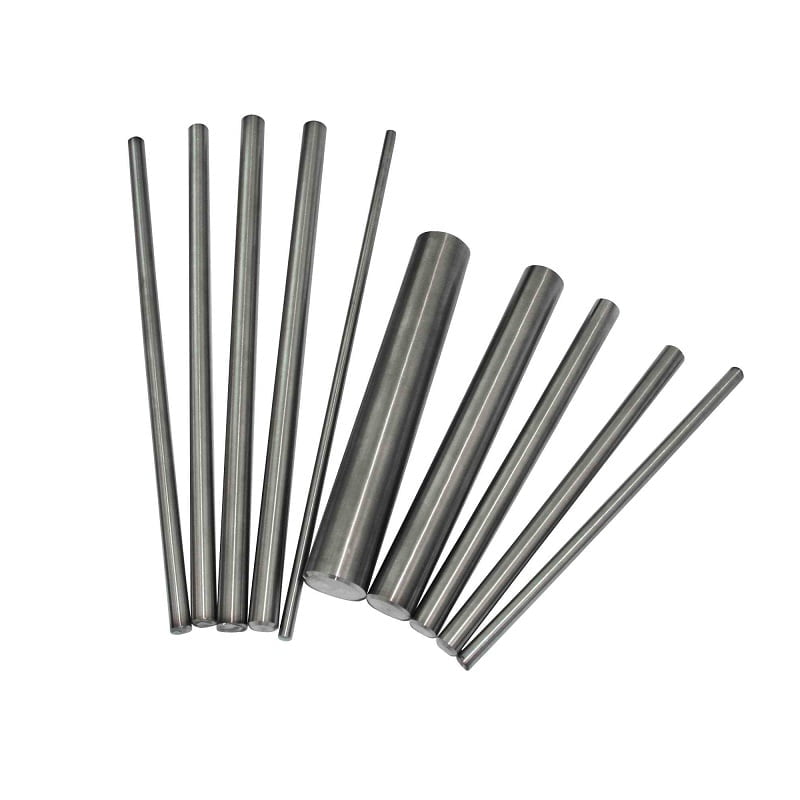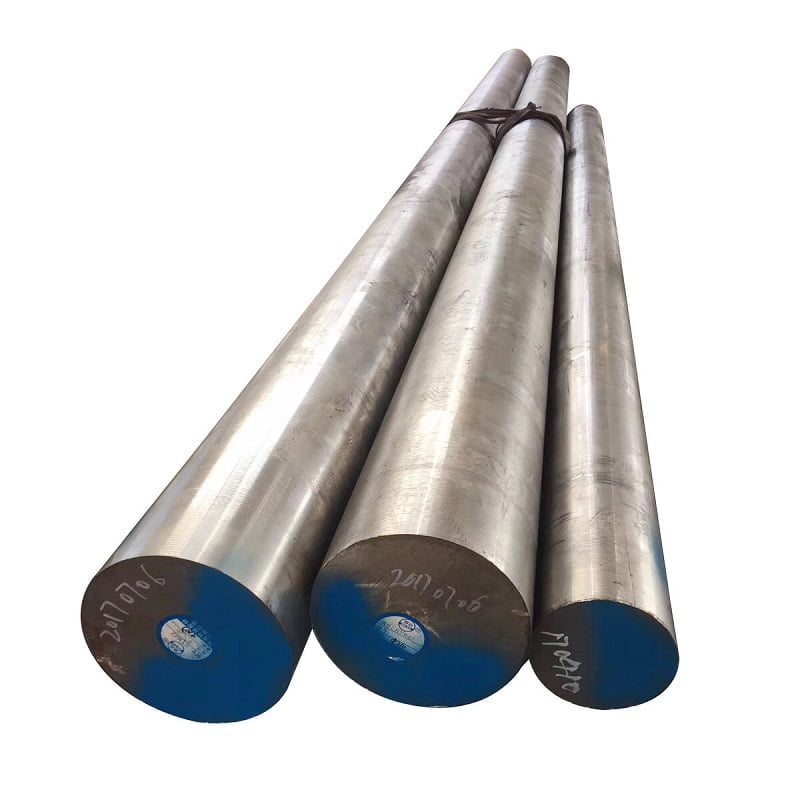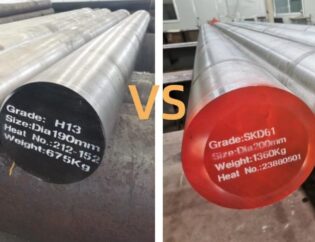
Les classes en acier sont essentielles à diverses applications d'ingénierie et de fabrication, chaque type offrant des propriétés uniques qui le rendent adapté à des utilisations spécifiques. Cette comparaison explore l'acier 12L14 et 4140 pour mettre en évidence leurs différences de composition, de propriétés mécaniques, d'applications, de capacités de traitement thermique, de soudabilité et de coût.
Présentation de l'acier 12L14
12L14 est un acier à faible teneur en carbone qui est connu pour son excellente machinabilité. Il est couramment utilisé dans les industries où l'usinage de précision est essentiel pour produire des composants de haute qualité.
Composition chimique de l'acier 12L14
La composition chimique de 12L14 est vitale pour sa machinabilité et ses performances globales. La composition typique est la suivante:
| Élément | Composition (%) |
|---|---|
| Carbone (C) | ~0,12% |
| Manganèse (Mn) | ~0,60% |
| Phosphore (P) | ~0,04% |
| Soufre (S) | ~0,26% |
| Plomb (Pb) | ~0,15% |
Le plomb est ajouté pour améliorer la machinabilité, ce qui rend cette qualité en acier particulièrement conviviale pour les applications d'usinage de précision.
Propriétés mécaniques de l'acier 12L14
Les propriétés mécaniques de 12L14 jouent un rôle crucial dans ses applications. Voici ses propriétés clés:
| Propriété | Valeur |
|---|---|
| Résistance à la traction | 58 000 à 75 000 psi |
| Limite d'élasticité | Environ 38 000 psi |
| Dureté | Environ 85 HRB |
| Usinabilité | Excellent |
| Ductilité | Bon pour les applications de stress faible à modéré |
Applications de l'acier 12L14
En raison de sa machinabilité exceptionnelle, 12L14 est couramment utilisé dans les applications qui nécessitent un usinage de précision. Les utilisations courantes incluent:
| Type de demande | La description |
|---|---|
| Pièces usinées avec précision | Composants nécessitant des tolérances étroites, telles que les raccords et les corps de soupape. |
| Attaches | Convient aux vis et aux boulons en raison de la facilité d'usinage. |
| Engrenages | Utilisé pour des engrenages à faible chargement dans diverses machines. |
| Composants hydrauliques | Idéal pour les raccords et composants hydrauliques avec des dimensions cohérentes. |

Aperçu de 4140 Steel
4140 L'acier est un acier en alliage moyen en carbone connu pour sa résistance, sa dureté et sa excellente résistance à l'usure. Il est fréquemment utilisé dans des applications à stress élevé qui nécessitent une durabilité et une ténacité.
Composition chimique de 4140 acier
La composition chimique de 4140 est conçue pour fournir une résistance et une résistance améliorées. La composition typique comprend:
| Élément | Composition (%) |
|---|---|
| Carbone (C) | 0.38 - 0,43% |
| Manganèse (Mn) | 00,60 – 0,90 % |
| Chrome (Cr) | 0.80 - 1,10% |
| Molybdène (Mo) | 0.15 - 0,25% |
| Phosphore (P) | ≤0,04% |
| Soufre (S) | ≤0,05% |
Les éléments d'alliage supplémentaires tels que le chrome et le molybdène améliorent la résistance à la durabilité et à l'usure de l'acier.
Propriétés mécaniques de 4140 acier
4140 L'acier présente des propriétés mécaniques exceptionnelles qui le prêtent bien aux applications haute performance. Voici ses propriétés clés:
| Propriété | Valeur |
|---|---|
| Résistance à la traction | 90 000 - 100 000 psi |
| Limite d'élasticité | Environ 60 000 psi |
| Dureté | Jusqu'à 50 HRC (traité à la chaleur) |
| Usinabilité | Modéré |
| Ductilité | Bon, surtout dans l'état recuit |
Applications de 4140 acier
En raison de sa résistance et de sa ténacité, l'acier 4140 est largement utilisé dans les applications qui exigent des performances et une durabilité élevées. Les utilisations courantes incluent:
| Type de demande | La description |
|---|---|
| Arbres | Utilisé dans les composants de transmission de puissance qui nécessitent une résistance à l'usure et à la déformation. |
| Engrenages | Convient pour les applications d'engrenages à haute charge, souvent traitées thermiquement pour une résistance supplémentaire. |
| Vilebrequins | Couramment utilisé dans les applications automobiles en raison de sa ténacité et de sa résistance à la fatigue. |
| Attaches robustes | Idéal pour les applications nécessitant une résistance à la traction élevée et une durabilité. |
Usinabilité
La machinabilité fait référence à la facilité avec laquelle un matériau peut être coupé et façonné pendant les processus d'usinage, ce qui influence considérablement l'efficacité de la production.
| Caractéristique | Acier 12L14 | 4140 acier |
|---|---|---|
| Facilité d'usinage | Excellent; Le contenu du plomb améliore la coupe et réduit l'usure des outils. | Modéré; nécessite des techniques d'usinage précises et peut entraîner une augmentation de l'usure des outils. |
La facilité d'usinage dans 12L14 signifie qu'elle est souvent préférée pour la production à haut volume de petites pièces, tandis que 4140 peut nécessiter un plus grand soin et des outils spéciaux.
Capacités de traitement thermique
Le traitement thermique joue un rôle crucial dans l'amélioration des propriétés de l'acier, en particulier pour les applications qui exigent une résistance et une dureté élevées.
| Caractéristique | Acier 12L14 | 4140 acier |
|---|---|---|
| Traitement thermique | Généralement non traité à la chaleur; Utilisé dans un état de trait pour conserver la machinabilité. | Très traitable à la chaleur, permettant des processus tels que la trempe et la trempe pour améliorer considérablement la dureté et la résistance. |
La capacité du 4140 à être traitée à la chaleur lui permet d'exceller dans des applications où une résistance à la résistance élevée et à l'usure est critique.
Soudabilité
La soudabilité est une caractéristique essentielle qui affecte la facilité avec laquelle différentes classes en acier peuvent être soudées ensemble pendant la fabrication.
| Caractéristique | Acier 12L14 | 4140 acier |
|---|---|---|
| Caractéristiques de soudage | Non recommandé pour le soudage dû au plomb, ce qui peut compromettre l'intégrité de la soudure. | Peut être soudé, bien que le préchauffage soit souvent nécessaire pour minimiser la fissuration; Des techniques de soudage appropriées et des charges doivent être utilisées. |
L'absence de soudabilité dans 12L14 peut limiter ses applications dans certains scénarios de conception où le soudage est requis, tandis que 4140 offre plus de polyvalence dans la fabrication.
Coût et disponibilité
Le coût et la disponibilité peuvent être des facteurs importants influençant le choix de l'acier dans les processus de fabrication.
| Caractéristique | Acier 12L14 | 4140 acier |
|---|---|---|
| Coût | Généralement plus cher en raison des éléments de plomb et d'alliage, bien que des économies puissent découler de sa machinabilité. | Généralement moins cher que 12L14; Disponible sous diverses formes et a tendance à avoir une large présence sur le marché en raison de sa polyvalence. |
La disponibilité du 4140 dans différentes tailles et formes en fait un choix attrayant pour une variété d'applications d'ingénierie.
Résumé et conclusion
La comparaison de l'acier 12L14 et 4140 révèle des différences significatives qui rendent chacun adapté aux applications distinctes.
| Caractéristique | Acier 12L14 | 4140 acier |
|---|---|---|
| Attributs principaux | Excellente machinabilité, faible carbone | Alliage à haute résistance, à la chaleur, à moyen carbone moyen |
| Composition chimique | Faible carbone; Le plomb améliore la machinabilité | Carbone moyen; Le chrome et le molybdène améliorent la force |
| Propriétés mécaniques | Résistance à la traction et à la limite d'élasticité modérées | Force et dureté à forte traction |
| Applications | Pièces de précision, fixations, composants hydrauliques | Arbres, engrenages, composants automobiles |
| Usinabilité | Supérieur en raison du contenu principal | Modéré, a besoin de techniques de précision |
| Traitement thermique | Pas généralement traité thermiquement | Peut être traité thermique pour des propriétés améliorées |
| Soudabilité | Ne convient pas au soudage | Peut être soudé avec des techniques appropriées |
| Coût et disponibilité | Matériaux d'usinage spécialisés plus coûteux | Plus économique, largement disponible |
En conclusion, le choix entre 12L14 et 4140 Steel dépend de l'exigence spécifique du projet, par exemple si l'usinage de précision ou la forte résistance est la priorité. Chaque grade en acier présente ses avantages et ses limites, ce qui rend essentiel pour les ingénieurs et les fabricants d'évaluer leurs besoins avant de sélectionner le matériau approprié. Si vous avez d'autres questions ou avez besoin d'informations supplémentaires, n'hésitez pas à demander!

